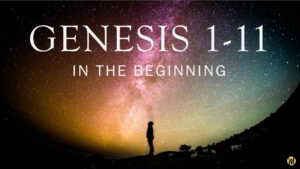 Genesis 1–11: God’s Design for Humanity. Pt. 1/5
Genesis 1–11: God’s Design for Humanity. Pt. 1/5
Faith Seeking Understanding, Intellectual Witness and Spiritual Renewal
 Genesis 1–11: God’s Design for Humanity. Pt. 1/5
Genesis 1–11: God’s Design for Humanity. Pt. 1/5
 Critical Theory Legitimization of LGBT. HPLSR Part 5/5
Critical Theory Legitimization of LGBT. HPLSR Part 5/5
Central Ideas of Critical Theory
A. Premises: Western culture is being strongly influenced by contemporary critical theory, which makes claims regarding (1) the social binary, (2) hegemonic power, (3) lived experience, and (4) social justice and praxis, or the implementation of critical social theories to effect social transformation.
B. Defining ideas.
1) Social binary, 2) Hegemonic power, 3) Lived experience, 4) Social justice and social transformation.
* The lived experience of minoritized and oppressed groups rivals and at times is prioritized over objective evidence and reason when it comes to understanding the world.
* Oppressive structures/institutions must be overturned.
C. Case study by Jeffrey Satinova on how the LGBT as a powerful aggressive activist movement successfully forced the American Psychiatric Association (APA) to redefine homosexuality, although the redefinition was a result of political activism rather than on scientific evidence.
D. Conclusion
1) LGBT is not just a lifestyle choice. It is an aggressive ideology which seeks power to impose its ideas as the basis of social policy to reshape social reality.
2) The LGBT movement is a well-funded, efficiently organized & aggressive movement seeking to drive the church & Christians from engagement with the public square.
3) Arguably, the LGBT movement is this generation’s signature rebellion against God’s moral law and order in the West.
E. Heb 12:14. Strive for peace with everyone, and for the holiness without which no one will see the Lord.
Challenge: We must courageously declare the truth of biblical teaching & humbly seek to share the wholeness found in God’s grace that brings liberation and real substantial healing to our brokenness.
You can view the full video at:
Critical Theory Legitimization of LGBT. HPLSR Part 5/5
Related Posts
The Triumph of the Therapeutic and the LGBTQ Sexual Revolution
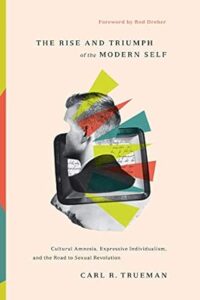 The Rise & Dominance of LGBT Movement. HPLSR. Part 4/5
The Rise & Dominance of LGBT Movement. HPLSR. Part 4/5
Question – how did the Christianized West abandon biblical morality & how did the LGBT movement become the dominant social-cultural revolutionary movement today?
A. Historical Developments
Pre-modern world mindset: “Mimesis” – discover meaningful moral order instituted by God & conform to it vs Poiesis – Modern technological mindset: “Poiesis” – sees the world as raw material out of which meaning and purpose can be created by the individual.
B. Prioritization of the individual’s inner psychology (Rousseau) – we might even say “feelings” or “intuitions” – for our sense of who we are and what the purpose of our lives is.
Result: Expressive individualism (Charles Taylor) and autonomous self, plastic people who make and remake personal identity at will.
Judith Butler: gender is not identical to biological sex. It is rather, “acts and gestures which are learned performance.
C. Contestation: Biological sex vs claim that gender identity is determined by one’s inner feelings (and beliefs), not by physical reality. Premise: Disorders in sexual development (DSD) do not constitute a third sex. Rather, DSDs are disorders in the development and formation of the male or female body.
Problem with Sex reassignment surgery (SRS).
D. Revolutionary imperative against sexual distinctions
Wilhelm Reich claimed that sexual distinction is a form of social repression. Transgenderism is a rebellion to overcome sexual distinctions.
Herbert Marcuse – To transform society politically, then, one must transform society sexually and psychologically. Logical outcome – the revolutionary imperative in response to the view sexual distinction is repressive.
You can view the full video at:
The Rise & Dominance of LGBT Movement. HPLSR. Part 4/5
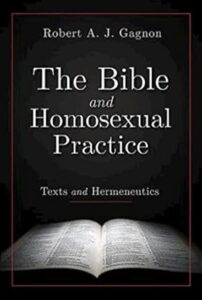 Paul’s Teaching on Homosexual Practice. HPLSR Part 3/5
Paul’s Teaching on Homosexual Practice. HPLSR Part 3/5
A. Rom. 1:22-27 The traditional interpretation of Rom 1:26–27 makes the following points: (1) homosexual and lesbian sex result, as do other sins, from rejecting God’s truth; (2) same-sex sexual relations are a judgment upon those who engage in them (“God gave them over”); (3) same-sex sexual relations are contrary to the ordinances for sex and marriage revealed by God in Scripture (Genesis 1–2) and in nature itself; and (4) thus, such sexual activities are immoral and disobedient to God, i.e., they are sinful.
B. The following LGBT claims are rejected
Claim 1. Paul talking about pederasty (sex with boys). No relevance to loving, consensual, monogamous, same-sex relations.
Claim 2. Paul talking about heterosexuals having homosexual sex – no relevance to people born with homosexual orientation. BUT para physin refers to unnatural relations contrary to nature.
C. Paul underscores his rejection of homosexual practice by using the Greek words for “male” and “female” rather than the more common words for “man” and “woman.” He is quoting from Gen. 1:27.
Meaning of the phrase “homosexual acts are ‘intrinsically disordered’ and ‘contrary to natural law’,” means.
D. 1 Corinthians 6:9-10 and 1Tim. 1:10
Meaning of the phrase, “men who practice homosexuality [oute malakoi oute arsenokoitai.”
Meaning of the terms, arsenokoites, ἀρσενοκοίτης and malakos, mαλακός
E. Homosexuality is contrary to the creation order of God. Hence, it is condemned by God, but it is not the last word of God. The message of the Bible: God’s grace and salvation is extended to everyone – to both heterosexuals and homosexuals who believe in Christ and repent from their sins.
You can watch the video at
Paul’s Teaching on Homosexual Practice. HPLSR Part 3/5

A. Can Homosexuals be changed? Difficult to change, but possible. Therapy gives relative success: 30 percent experience freedom from symptoms and 30 percent experience significant improvement.
B. OT teaching– Homosexuality viewed as a grievous sin. All forms of homosexual practice were rejected. 1) Gen. 19 Sodom and Gomorrah. Exegetical refutation of revisionists who alleged that the sin in Sodom and Gomorrah was inhospitality, violent gang rape vs consensual sex. 2) Lev. 18:22, 20:13; Deut. 23: 17-18. Homosexual practice is the only specific sin singled out as an abomination and given death penalty. 3) Lev. 18:24-30. Prohibition against homosexuality is universal & not just restricted to Israel.
C. NT teaching Jesus was silent on the issue, but silent does not mean approval.
Continue reading “OT & Jesus’ Teaching on Homosexual Practice. HPLSR Part 2/5”
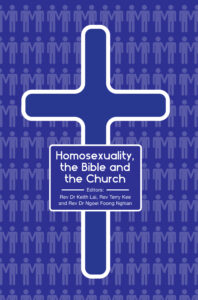 LGBT Ideology & Activism in Social Context. HPLSR Part 1/5
LGBT Ideology & Activism in Social Context. HPLSR Part 1/5
A. Two Opposing Reactions to Homosexual Practice
1) Inclusivist Liberals: Emphasis on LOVE with a loose attachment to biblical law.
2) Historical church 2000 yr Tradition.
B. Application – Welcoming, but not affirming
Speak God’s truth in love BUT no place for self-righteousness.
Differentiate between people struggling with same-sex attraction from militant homosexual activists.
Main focus on homosexual practices tho’ may make reference to the sexual dysphoria and transgender debate.
C. Basic Facts
Relevant statistics about homosexual practices today
Multiple causes of homosexuality.
D. Biblical Focus on Acts, Not ‘Orientation’
The Bible knows nothing of “homosexual orientation.” The church’s moral focus is not fundamentally with homosexual orientation, no matter how it is supposed to develop.The church’s moral concern is with what an individual does with his or her experiences of same-sex attraction. Continue reading “LGBT Ideology & Activism in Social Context. Homosexual Practice & LGBT Sexual Revolution. Part 1/5”
 In response to my earlier post on Redeeming the Lion Dance for the Glory of God, I was asked about my view on a video which shows the Chinese Dragon Dance being performed in the Apostolic Palace and the Pope dotting the eye of the dragon. Re: link given in the comment section.
In response to my earlier post on Redeeming the Lion Dance for the Glory of God, I was asked about my view on a video which shows the Chinese Dragon Dance being performed in the Apostolic Palace and the Pope dotting the eye of the dragon. Re: link given in the comment section.
My understanding of the dragon dance in Chinese culture:
The dragon in Chinese culture is not inherently evil. It is actually a wise & benevolent creature. No surprise, many Chinese parents plan to have a (male) child in the year of the dragon. I asked many Chinese scholars whether the Chinese dragon exists & I get a blank look in their eyes. Their answer – the dragon is just a symbol, although to me religious symbols have spiritual consequences. Finally, the dragon was also used to symbolize the Emperor in ancient China. In the light of the positive perception of the dragon in Chinese culture, it is questionable whether the Chinese dragon should be associated with the evil dragon in the Book of Revelation and in Western culture. The application of the same English word to these two creatures is a historical accident or coincidence in literary translation.
However, with all due respect, I have problems with the Pope & the Catholic Church blessing the dragon dance as it is. Continue reading “On the Pope Dotting the Eye of the Dragon”

What would be an appreciative, but critical perspective on the Chinese lion dance?
It is undeniable that the lion dance contains superstitious elements. For example, the dance is often performed to bring good luck to business owners and to ward off evil spirits. These superstitious beliefs are inconsistent with Christian belief in the sovereign providence of God. Hence, some Christians have expressed uneasiness when they witness lion dances within church premises. It must be acknowledged that these churches sponsor lion dance in their premises as an initiative of good will to build bridges to the Chinese community. Sponsoring lion dances during the Chinese Spring festival or Chinese New Year provides a most fitting occasion for churches to demonstrate the fact that Chinese Christians need not abandon their cultural heritage when they embrace the Christian faith.
On the other hand, one wonders whether these churches may have unwittingly committed religious syncretism, the process where the Christian community uncritically adopts superstitious beliefs which are contrary to the fundamental tenets of Christianity. Continue reading “Redeeming the Lion Dance for the Glory of God?”
 |
 |
I have been asked several times about my view on a Tik Tok video which shows a church conducting its Chinese New Year or Spring Festival worship which seems to follow the form of the Chinese ritual of ancestor worship or veneration.
My response to this video is based on how practitioners of this kind of rituals normally justify their adoption of the form of “ancestor worship or veneration. It is also based on my personal experience of similar worship during my younger pagan days.
One may argue that offering incense is in the Bible. OK, I can give some benefit of doubt on this matter. That is, putting three incense joss sticks is debatable and defensible – assuming worship & acknowledgement of the Triune God in heaven with NO images. Context matters.1[Additional footnote added on 14/04/2025 as clarification – Context matters. I wont approve putting a joss stick in front of an ancestral tablet, or the earth god tablet etc.- because according to pagan beliefs, the spirits of the ancestors or the spirit of the earth god resides within the tablets. This is idolatry even though there are no images. Conceivably, someone may just put joss sticks in an urn to offer incense to the “heavenly god/God” without a tablet or images – well, we can discuss to find out what exactly the one who puts the joss stick has in mind & decide accordingly. However, in reality (except for a Chinese cult, which existed briefly in the 1970s), 99+ % of the people put the joss sticks in front of some kinds of tablets which are understood to be residences of spirits. This would be idolatry. The case of the tablet in the video is ambiguous because I don’t know what is in the tablet – but if what is written in the tablet encourages or is in line with the customary idea of tablets being places of residence of any spirit(s), then it would be idolatry. The presumption is that the presence of the tablet is likely to become a stumbling block and therefore is best not used at all].
Does the tablet in front of the table contain only Bible verses praising the Triune God without images? If there is no image, then the ritual could be discussed. But I doubt it as bible verses tablets have not become common place in church worship rituals. What is written in the tablet would make a crucial difference to the nature of the ritual as it could be some Chinese characters describing the “sky god” Tian (天), the “earth god” Tudigong (土地公), and the “kitchen god” is known as Zao Shen (灶神). The presence of these references would certainly be problematic. Looks like this video pertains more towards some form of ancestor veneration/worship. Continue reading “Should the Church Adopt the Chinese Ritual of Ancestor Worship/Veneration?”
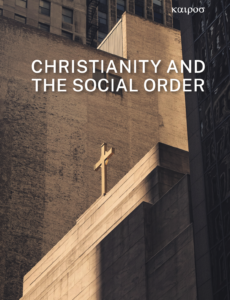
Social engagement has become acceptable in many conservative churches today. But social engagement in the ideologically crowded space of civil society is inherently contentious. The danger arises when Christians, in their eagerness to be “relevant” and to be accepted by wider society, end up following an agenda set by other social activists. Luke Bretherton identifies three processes whereby society may domesticate the church: 1) co-option – the church becoming a client of state patronage, 2) competition – the church is reduced to just another player in identity politics, pursuing its own religious rights, 3) commodification – the market construes the church as a product of consumption as Christianity becomes simply another privatized lifestyle choice.1Luke Bretherton, Christianity and Contemporary Politics (Blackwell, 2010), pp. 1-2. Instead of allowing the church to be swept along by fashionable social tides, Christian activists must clearly focus on social priorities determined by Christian values. However, Christian values will remain as ‘ghostly’ abstractions unless they are embodied in a community. Hence, social engagement needs to go beyond mere discussion on personal values and focus more on how Christian values are exemplified in a Christian community. Continue reading “Identity in Christ and the Moral Witness of the Church”